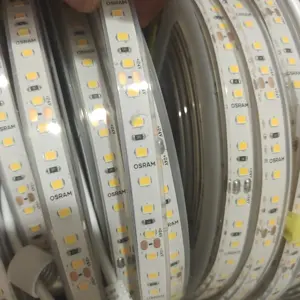Understanding LED Strip Voltage Requirements
LED strip lights have revolutionized the way we illuminate spaces, offering a blend of versatility and energy efficiency. However, to fully realize their potential, it’s crucial to understand the voltage requirements associated with different types of LED strips. This knowledge not only aids in selecting the proper strips but also ensures optimal performance and longevity.
Types of LED Strips and Their Voltage Requirements
LED strips come in various types, each with specific voltage requirements that align with their design and purpose. It is essential to understand these types to choose the right one for your project.
- 12V LED Strips: These are the most common type for residential and commercial use. They are perfect for under-cabinet lighting, accent lights, and backlighting.
- 24V LED Strips: These strips are used in applications where longer runs of LED lights are required without significant voltage drop. They are ideal for larger areas or outdoor applications.
- 5V LED Strips: Often used in innovative projects or shorter runs, these strips are typically powered via USB and are excellent for small DIY projects.
- Low Voltage and High Voltage Options: Depending on the requirement, some strips operate at different voltages ranging from 12V to 48V. These options offer flexibility in various settings.
Applications of LED Strips Based on Voltage Requirements
With the wide variety of LED strips available, understanding their applications based on voltage requirements can help maximize their effectiveness and utility.
- Residential Lighting: 12V and 24V LED strips are commonly used in homes for ambient lighting, under-shelf lighting, and mood lighting.
- Commercial Spaces: Businesses often utilize 24V options for brighter displays and long-running installations, ensuring even lighting across large areas.
- Automotive Use: 12V LED strips are frequently found in vehicles for decorative lighting, where low power consumption is essential.
- Outdoor Lighting: 24V strips are ideal for outdoor settings, offering the robustness needed to withstand various weather conditions.
Features and Benefits of Understanding LED Strip Voltage Requirements
Grasping the voltage requirements isn't just about selecting the right power supply; it also involves maximizing safety and performance. Here are some key features and benefits of acknowledging these requirements:
- Efficiency: Knowing the correct voltage helps in choosing the right transformer or power supply, leading to energy savings.
- Safety: Using the correct voltage reduces the risk of overheating and fire hazards, ensuring safe operation.
- Longevity: Proper voltage application prevents premature aging and failure of LED components, extending their lifespan significantly.
- Flexibility: Understanding voltage requirements allows for a more versatile approach to installations, enabling innovative lighting designs.
How to Choose the Right LED Strip Based on Voltage Requirements
Selecting the appropriate LED strip based on voltage requirements can be pivotal in the success of any lighting project. Here are critical factors to consider:
- Determine Your Needs: Assess the location and purpose of the lighting. For extensive areas, consider 24V strips for consistent brightness.
- Evaluate Power Supply Options: Ensure compatibility between the chosen LED strips and power source. This will prevent most issues related to voltage mismatches.
- Consider Installation Area: For confined spaces, 12V types may be more suitable while 24V strips are great for larger, open layouts.
- Check for Voltage Drop: For long runs, selecting a higher voltage strip (like 24V) can help minimize significant voltage drop experiences.




















































